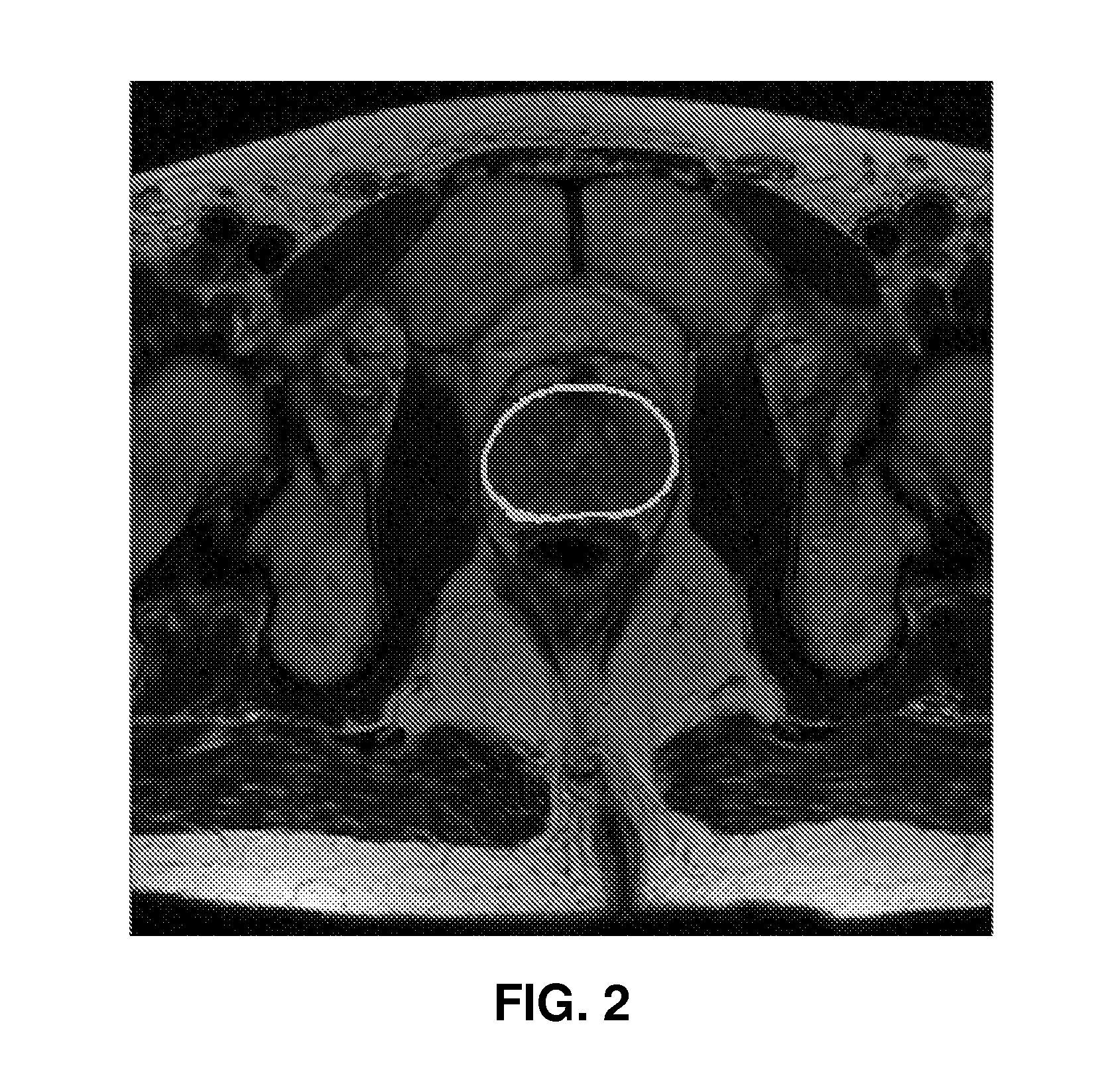Method and Apparatus for Registering Image Data Between Different Types of Image Data to Guide a Medical Procedure
a technology of image data and image data, applied in the field of image processing, can solve the problems of high false negative rate of trus-guided biopsy for prostate cancer diagnosis, difficult or impossible manual correlating of image data between two types of image modalities, etc., and achieve the effect of improving diagnosis and/or treatmen
- Summary
- Abstract
- Description
- Claims
- Application Information
AI Technical Summary
Benefits of technology
Problems solved by technology
Method used
Image
Examples
example 1
[0079]A T2 weighted MRI was acquired using a Siemens 1.5 T scanner and a pelvic phase array coil for seven patients. Three dimensional TRUS imagery was acquired using a bi-planar side-firing transrectal probe. A radiologist segmented each prostate and selected 3-5 landmarks on MRI and TRUS images. Registration was performed by segmenting the prostate in the MRI manually. The prostate location was then estimated for the TRUS image. The identified MRI portion is then registered with the estimated TRUS portion. The registration can be evaluated using any of a number of measurements or analytics. In the present instance, registration was evaluated using the sum of square differences of landmarks and prostate overlap. In the present instance, the measured overlap was 5.85±1.08 mm and an overlap of 73.6±4.7%
[0080]Automated Image Registration
[0081]In addition to the process described above, the process of registering the MRI and TRUS data can be semi-automated or fully automated. An automa...
experiment 1
tenuation Correction on Registration Accuracy
[0141]It is possible that subtle differences in intensity characteristics across the TRUS image can lead to a probabilistic model Pi(c) that does not accurately model the prostate location. Incorrect estimation of Pi(c) can therefore result in sub-optimal image registration. The effect of attenuation correction was evaluated on registration accuracy in terms of RMSE. The MAPPER process was evaluated with and without attenuation correction for D1.
[0142]FIG. 11 illustrates the quantitative results for Te, with and without attenuation correction for five texture features. Attenuation correction has two effects on the registration results: (1) attenuation reduces RMSE variance across studies and therefore gives a more robust image registration; and (2) attenuation lowers RMSE and, hence, provides a more accurate registration accuracy. The positive effects of attenuation correction on registration occur independent of which feature was used.
experiment 2
Regularization Weight
[0143]The regularization weight ∝ controls the relative importance of a smooth Te and accurately registering the prostate mask on MRI to the TRUS probabilistic model (i.e. maximizing Equation 10). To assess the sensitivity of the performance of the MAPPER process on the choice of ∝, the regularization weight ∝ was varied for {100, 1, 1 E-2, 1 E-4} and assessed RMSE for D1.
[0144]FIG. 12 illustrates the RMSE for each set of regularization parameters ∝ evaluated for two texture features, (a) Rayleigh and (b) variance. RMSE changes little with respect to ∝, even across a wide range of values, ∝ E {100, 1, 1E-2, 1E-4}.
PUM
 Login to View More
Login to View More Abstract
Description
Claims
Application Information
 Login to View More
Login to View More - R&D
- Intellectual Property
- Life Sciences
- Materials
- Tech Scout
- Unparalleled Data Quality
- Higher Quality Content
- 60% Fewer Hallucinations
Browse by: Latest US Patents, China's latest patents, Technical Efficacy Thesaurus, Application Domain, Technology Topic, Popular Technical Reports.
© 2025 PatSnap. All rights reserved.Legal|Privacy policy|Modern Slavery Act Transparency Statement|Sitemap|About US| Contact US: help@patsnap.com



